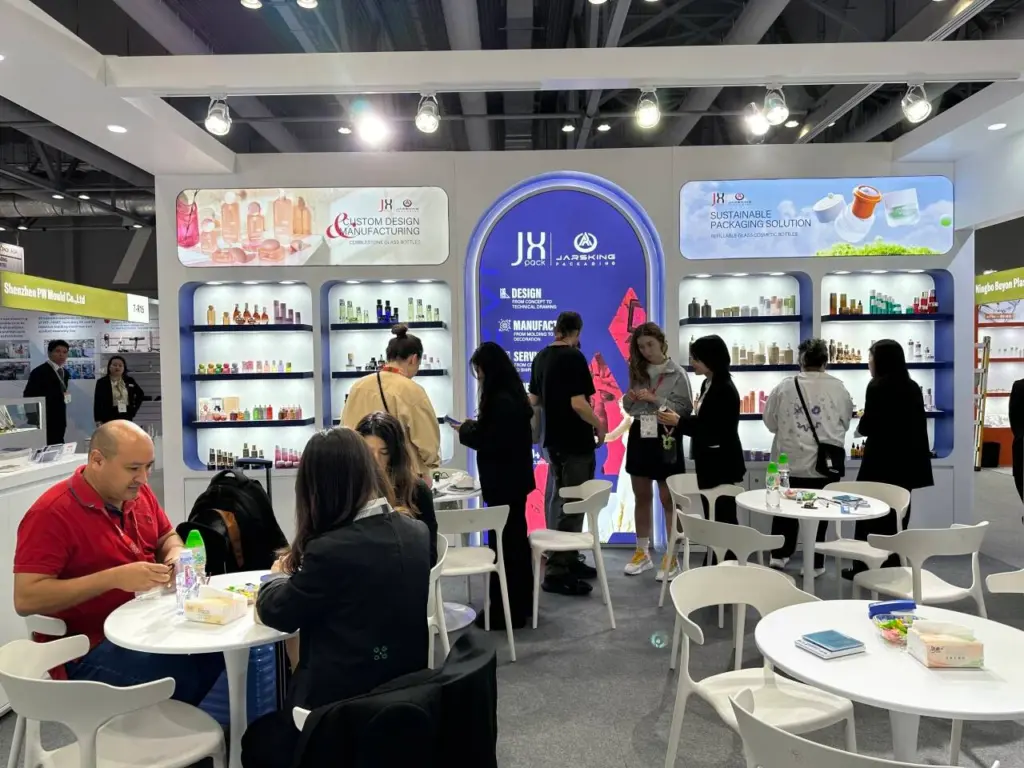This blog presents an in-depth analysis of the revolutionary transformation sweeping through the Asian fragrance market, using the upcoming Cosmopack Asia 2025, held from November 11th to 13th at Hong Kong’s AsiaWorld-Expo, as a critical lens. It is structured in two parts. Part One focuses on the exhibition itself, offering a frontline perspective on its key highlights: the strategic curation of zones for both niche and mass-market perfumery; core trends in packaging design, with a deep dive into sustainability and personalization; and the groundbreaking innovations in native Asian raw materials and formulations. Part Two shifts to a broader market analysis, exploring the powerful forces driving these innovations—namely, the rise of a new generation of sophisticated Asian consumers and a profound blossoming of cultural confidence. By intrinsically linking the “supply-side” innovations showcased at the fair with the “demand-side” dynamics of the market, this article paints a panoramic picture of the Asian fragrance industry’s evolution from a follower of trends to a global leader, forecasting the golden trajectory of its future.

Introduction: A New Era for Eastern Scents
Imagine a scene in a chic, independent perfumery on Shanghai’s Wukang Road. A young consumer is captivated by a fragrance inspired by the scent of “white tea after the rain.” Simultaneously, in Tokyo’s Ginza district, a professional is selecting a cologne that masterfully blends the crisp notes of hinoki wood with the bright zest of yuzu. These are not isolated vignettes; they are snapshots of a continent-wide “olfactory awakening.” Across Asia, fragrance is shedding its traditional role as a mere luxury good and is being woven into the very fabric of modern identity and daily ritual. The “scent economy” is no longer a whisper but a resonant declaration of personal style and cultural pride.
At the epicenter of this transformation stands Cosmopack Asia 2025. Scheduled alongside its finished-product counterpart, Cosmoprof Asia (November 12th-14th at the Hong Kong Convention & Exhibition Centre), this event is far more than a conventional trade fair for the beauty supply chain. It represents a crucial intersection, a dynamic marketplace of ideas where the world’s most advanced production technologies collide head-on with the unique and insatiable demands of the Asian market. It is here, amidst the gleaming machinery and innovative raw materials, that the blueprint for the next chapter in global perfumery—an era increasingly defined by Asia—will be unveiled.
As the beauty industry fully reconvenes in a post-pandemic landscape, the significance of this Hong Kong gathering is amplified. It is a bellwether for global trends, a hub for critical business intelligence, and a testament to the resilience and relentless innovation of the sector. For fragrance, in particular, the 2025 edition promises to be a landmark event. With dedicated zones, a new focus on ingredients, and a palpable energy driven by regional market growth, the fair offers an unparalleled opportunity to diagnose the health and predict the future of the industry.
This blog will guide you through this pivotal moment. We will first step “inside” the exhibition hall, decoding the tangible innovations in zoning, packaging, and formulation to understand the supply-side narrative. Subsequently, we will zoom out to “explore” the vast Asian market, uncovering the cultural and commercial logic that fuels these trends from the demand side. By bridging the gap between the product and the person, the creation and the consumer, we will construct a comprehensive, 360-degree view of an industry at the dawn of its golden age.
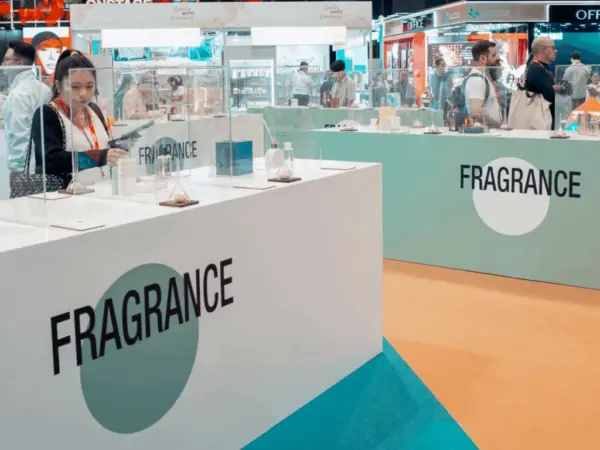
Cosmopack Asia 2025 – The Vanguard of Olfactory Innovation
Cosmopack Asia is the engine room of the beauty industry, the place where the concepts seen on store shelves are born. For perfumery, it serves as a physical text, rich with signals about where the industry is heading. By meticulously dissecting its key features, we can read the future of fragrance.
The Strategic Symphony of Exhibition Zones: From Artistic Curation to Commercial Empowerment
The floor plan of a trade show is a strategic document, and Cosmopack Asia 2025’s layout for fragrance speaks volumes about the market’s bifurcation and sophistication. It acknowledges that the future is not monolithic; it lies in catering to both the art-house connoisseur and the trend-driven mass market with equal focus and expertise.
“Explorers by Esxence”: The Asian Sermon for Niche Artistic Perfumery
The collaboration with Esxence, the Milan-based definitive event for artistic perfumery, is perhaps the most significant strategic move in the fragrance section. This is not merely a showcase of brands; it is the importation of a curatorial philosophy. The “Explorers by Esxence” zone aims to educate and elevate the Asian market’s appreciation for high-concept, author-driven perfumery, moving the conversation beyond simple scent profiles to complex narratives and artistic intent.
This initiative is a direct response to a maturing demand. Asian distributors, boutique owners, and high-end department store buyers are actively hunting for differentiation. In a sea of global blockbusters, niche brands offer unique stories, higher profit margins, and an air of exclusivity that resonates powerfully with discerning consumers. This zone will act as a curated gateway, connecting these unique brands with the region’s most influential gatekeepers.
We can anticipate a diverse array of olfactory philosophies within this space. Expect to see brands championing stark minimalism, with clean aesthetics and understated scents that speak to a Japanese sense of wabi-sabi. Others will be narrative-driven, their fragrances acting as chapters in a larger story, appealing to the Chinese consumer’s love for lore and history. Naturalist brands, focusing on ethically sourced, high-purity botanicals, will cater to the growing demand for “clean” and “green” products. And, of course, the avant-garde will be present—experimental brands pushing the boundaries of olfaction with unconventional notes and challenging compositions, testing the limits of the market’s adventurous spirit. Imagine a brand that captures the scent of wet calligraphy ink on rice paper, or another that tells the story of the Silk Road through a sequence of spices and resins. These are the kinds of olfactory artworks “Explorers by Esxence” will bring to the forefront.
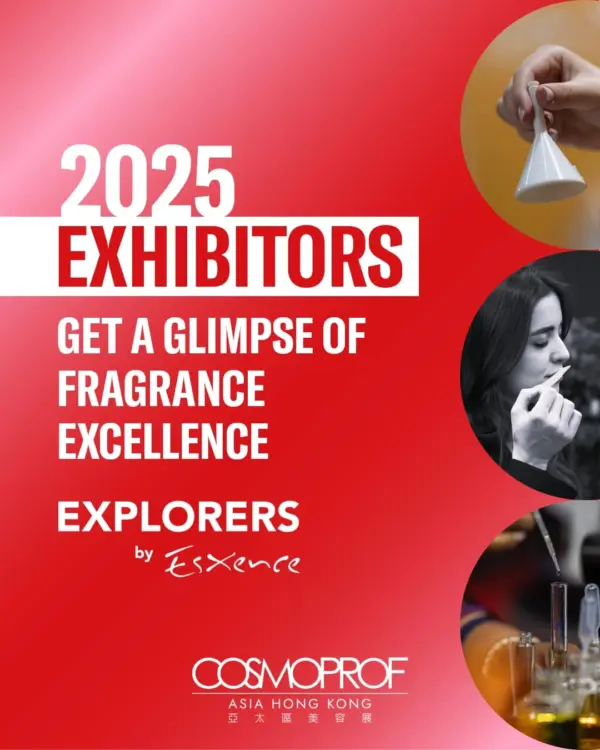
“Fragrance Avenue”: The Innovation Accelerator for the Mass Market
In stark contrast to the artistic intimacy of the Esxence zone, “Fragrance Avenue” is the bustling commercial heartland. Its core function is to provide a one-stop-shop solution for mass-market and “masstige” brands, covering the entire spectrum from packaging and design to OEM/ODM (Original Equipment Manufacturer/Original Design Manufacturer) services. This is where creativity meets capacity, where a brilliant idea can be efficiently scaled for millions of consumers.
This zone directly addresses the critical pain points of the mainstream fragrance market. Brands face immense pressure from product homogenization, the relentless demand for speed-to-market driven by fast fashion cycles, and razor-thin cost controls. “Fragrance Avenue” serves as an integrated solution provider. A brand can arrive with a concept and leave with a complete supply chain partnership, ready to launch a new line in record time.
The innovations showcased here will be pragmatic yet powerful. In packaging, the focus will be on eco-friendly materials that are also suitable for high-speed production lines—think lightweight glass, high-percentage PCR plastics, and monomaterial pumps that simplify recycling. We will likely see an array of “fast-fashion” packaging molds—stock components that can be quickly customized with color, finish, and branding to respond to fleeting social media trends. Furthermore, with e-commerce now a dominant sales channel, solutions optimized for shipping—durable, lightweight, and offering a compelling “unboxing” experience without excessive waste—will be a major focus. This avenue is not about reinventing the wheel, but about making it run faster, more efficiently, and more sustainably than ever before.
The Art of the Vessel: A Revolution in Packaging as the Silent Salesman
If the fragrance is the soul of the product, the bottle is its body and its voice. In a crowded market, packaging is the first point of contact, the silent salesman that communicates brand value, ethics, and aesthetics in a single glance. At Cosmopack Asia 2025, the packaging revolution will be fought on two key fronts: sustainability and personalization.
A Meditation on Sustainability: Beyond “Eco-Friendly” to a Circular Aesthetic
The demand for sustainability in Asia has evolved from a niche concern to a mainstream expectation. It is no longer a “nice-to-have” but a core tenet of brand legitimacy. The innovations on display will reflect a deeper, more holistic approach to environmental responsibility.
In terms of materials, we will move beyond simple recyclability. Expect to see cutting-edge solutions like mycelium (mushroom root) packaging, which is fully compostable and can be molded into protective, high-design forms. Advances in PCR (Post-Consumer Recycled) glass purification will be showcased, demonstrating the ability to create crystal-clear, luxury-grade bottles from 100% recycled content. The latest generation of plant-based plastics (PLA) and innovative secondary packaging that is either water-soluble or backyard-compostable will also feature prominently.
Even more crucial is the shift in design philosophy from a linear “take-make-dispose” model to a circular one. The concept of refillable systems will be paramount. This goes beyond simple screw-top refills to sophisticated, user-friendly mechanisms that preserve the luxury experience. Brands are engineering systems where an inner cartridge can be easily replaced, keeping the beautiful, heavier outer flacon as a permanent object of desire. Minimalist design will also be presented as a form of sustainability—reducing the use of inks, foils, and complex multi-material caps not only lowers the environmental footprint but also aligns with a chic, modern aesthetic. This approach connects deeply with traditional Asian philosophies like the Japanese concept of “Mottainai” (a sense of regret concerning waste) and the Taoist ideal of harmony with nature, giving it a powerful cultural resonance in the region.
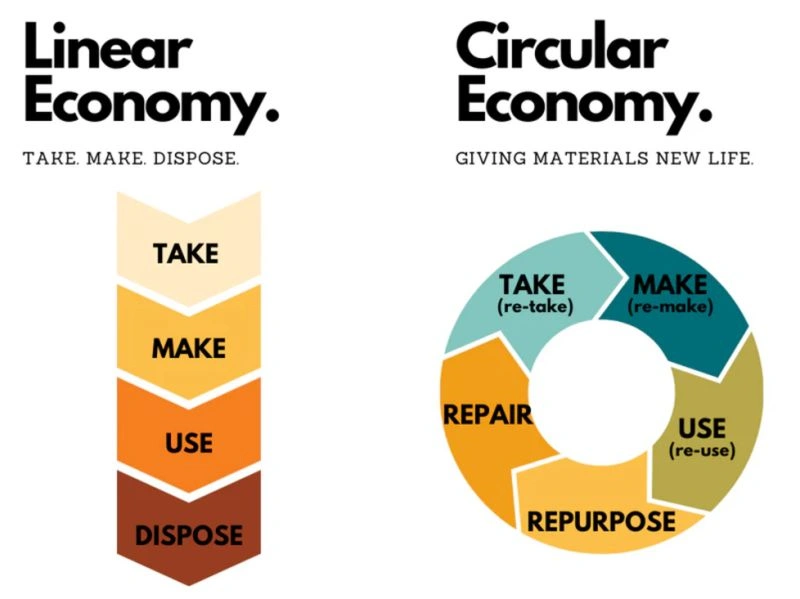
Source:https://www.linkedin.com/posts/islandcoastaltrust_a-linear-economy-traditionally-follows-the-activity-7267265911101751296-cp1j/
The Declaration of Individuality: From “One-Size-Fits-All” to “A Bottle for One”
Parallel to the collective responsibility of sustainability is the individualistic desire for self-expression. Mass production is giving way to mass customization, and technology is the enabler. The goal is to transform a mass-produced object into a unique personal totem.
Advanced digital inkjet printing will be a key technology, allowing for high-resolution, full-color images and patterns to be printed directly onto curved glass surfaces in small batches. This means a brand could release limited-edition artist collaborations or even allow consumers to upload their own designs. Precision laser engraving will offer a more subtle and elegant form of personalization, perfect for adding initials, a significant date, or a short message onto the bottle or cap. We may also see the application of 3D printing for creating unique, add-on decorative elements or highly intricate, limited-edition caps that would be impossible to produce with traditional molding.
The concept of “modular packaging” will also gain traction. Imagine a system where the consumer acts as a co-creator, selecting from a menu of options for the bottle shape, the pump color, the style of the cap, and decorative charms or collars. This taps directly into the “IKEA effect” and the strong desire of Gen Z to participate in the creative process. It transforms the act of buying a fragrance from a simple transaction into a memorable, creative experience, forging a much deeper and more personal connection between the consumer and the brand.
The Source of the Soul: Expressing Asian Terroir in Scent
For decades, the soul of perfumery—its raw materials and creative composition—was overwhelmingly Eurocentric. Cosmopack Asia 2025, particularly through its new, co-located ingredient showcase, signals a definitive shift. The spotlight is turning to Asia, not just as a market, but as a source of olfactory inspiration and formulation philosophy.
The Synergistic Value of “Beauty Ingredients & Formulation Asia” (BIFA)
The strategic decision to co-locate BIFA with Cosmopack Asia is a game-changer. It breaks down the traditional silos between packaging and formulation. Historically, a perfumer would create a scent, which would then be handed over to a packaging team. This new synergy allows for a more integrated creative process. A packaging designer working on a bottle inspired by bamboo can now simultaneously confer with formulators who are using advanced extraction techniques to capture the true scent of a wet bamboo forest. This holistic approach ensures a cohesive and authentic final product where the inside and the outside tell the same story.

Source:https://www.beautyifa.com/bifa-weekly-01-beautys-tech-revolution
The Modern Revival of Eastern Botanicals: From Traditional Herbs to Avant-Garde Extracts
The heart of this new movement is the rediscovery and reinterpretation of Asia’s rich botanical heritage. We can map out a new “olfactory terroir” of the continent, featuring ingredients that evoke a powerful sense of place and memory for Asian consumers. From China, the delicate, apricot-like aroma of Osmanthus, the ethereal scent of Magnolia, and the smoky, earthy notes of Pu-erh tea are being explored. Japan offers the transient beauty of Sakura (cherry blossom), the meditative calm of Hinoki wood, and the sparkling zest of Yuzu. Southeast Asia provides a treasure trove of intense florals like Champaca and Frangipani, the green vibrancy of Lemongrass, and the profound, mystical depth of Agarwood (Oud).
Modern science is the key to unlocking the true potential of these traditional materials. Supercritical CO2 extraction, for example, can capture the fresh, delicate scent of Osmanthus without the cloying sweetness that can result from traditional solvent extraction. Headspace technology allows perfumers to analyze and recreate the precise molecular composition of an abstract scent, such as the air in a temple garden or the steam rising from a cup of premium oolong tea. The major global fragrance houses like Givaudan, Firmenich, and IFF have recognized this immense potential, establishing major R&D centers across Asia. Their mission is to “translate” these uniquely Eastern scents into a modern olfactory language that can be appreciated by a global audience, blending ancient tradition with cutting-edge chemistry.
“Clean” and Gentle: The Formulation Philosophy Tailored for Asian Consumers
This focus on the soul of the fragrance extends to its very composition. Asian consumers, particularly in East Asia, have been at the forefront of the “Clean Beauty” movement, bringing a level of ingredient scrutiny from skincare into all other beauty categories, including fragrance. There is a strong preference for products perceived as pure, safe, and gentle.
In response, BIFA will showcase a new generation of fragrance formulations. Alcohol-free perfumes, using bases of botanical hydrosols or purified water, will be a major trend, appealing to consumers with sensitive skin or religious restrictions. The rise of biotechnology will be evident in sustainable fragrance molecules derived from fermentation processes, offering an ethical and consistent alternative to rare or endangered natural ingredients. Finally, the philosophy of “less is more” will lead to “minimalist formulations”—fragrances with shorter, fully transparent ingredient lists that consciously exclude potential allergens. This commitment to clean and gentle formulation is not just a technical specification; it is a sign of respect for the informed Asian consumer and their sophisticated approach to well-being.
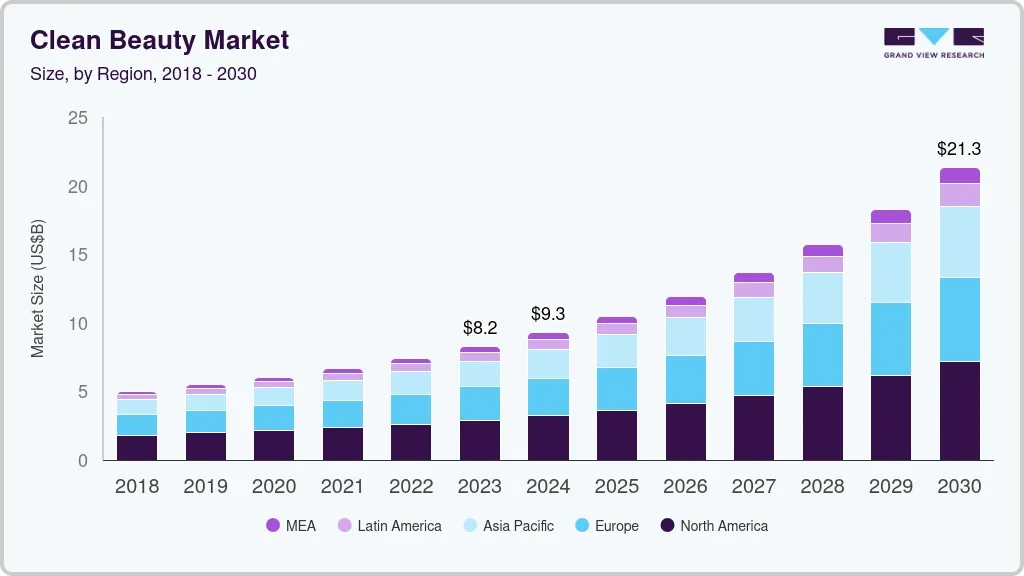
Source: https://www.grandviewresearch.com/industry-analysis/clean-beauty-market-report
The Ascent of the Asian Fragrance Market – A Symphony of Culture and Consumers
The innovations witnessed at Cosmopack Asia do not exist in a vacuum. They are the direct result of a seismic shift in the Asian market itself—a complex interplay of demographic change, cultural resurgence, and evolving consumer behavior. To fully understand the “why” behind the “what,” we must explore the forces shaping this new landscape.
The New Olfactory Map: Decoding the Gen Z-Dominated Asian Fragrance Consumer
The engine of the Asian fragrance boom is its youth. Gen Z and Millennials are not just buying perfume; they are integrating it into their lives with a passion and sophistication that is reshaping the entire industry. They approach scent with a new set of values, expectations, and behaviors.
“Scent Personas”: Identity Consumption for Gen Z and Millennials
For this generation, fragrance is a crucial tool for identity construction. It is an invisible accessory, a personal signature that communicates more about their personality, mood, and aspirations than a logo on a handbag. They are not merely buying a pleasant smell; they are acquiring a story, an attitude, a carefully curated “persona.” A woody, incense-laden scent might signify a contemplative, artistic soul, while a bright, citrusy fragrance could project an image of optimism and energy. This has led to the decline of the “signature scent” in favor of a “fragrance wardrobe”—a collection of different perfumes to suit different occasions, moods, and even outfits.
Social media platforms are the primary theaters where these scent personas are discovered and performed. On apps like China’s Xiaohongshu (Little Red Book) and Douyin (TikTok), fragrance is a highly visual and narrative-driven category. Scent reviews are not technical descriptions of notes but evocative stories, or “scent-scapes,” often accompanied by high-quality “unboxing” videos and aesthetic flat lays. Key Opinion Leaders (KOLs) and Key Opinion Consumers (KOCs) act as trusted curators, their recommendations driving viral trends and creating overnight sensations. This digital ecosystem has made the path to purchase more complex and content-rich, forcing brands to become master storytellers. The popularity of “perfume sample culture”—buying small decants to trial a wide variety of scents before committing to a full bottle—is a direct result of this exploratory mindset, presenting both a challenge and an opportunity for brands in their product sampling and sizing strategies.
The “He-conomy” Awakens: Structural Opportunities in the Asian Male Fragrance Market
For years, the male fragrance market in Asia was an afterthought. Today, it represents one of the most significant growth opportunities. This awakening is fueled by a profound shift in cultural perceptions of masculinity. The old, rigid archetypes are giving way to a more fluid and diverse understanding, where personal grooming and self-care are no longer seen as exclusively feminine pursuits but as integral components of modern success and well-being.
This has led to a dramatic expansion in the variety of scents men are willing to explore. The traditional reliance on fresh “aquatic” or classic “fougere” fragrances is being challenged by a growing interest in more complex and individualistic scent profiles. Sophisticated woody notes, rich leather accords, and even gender-neutral florals and gourmand scents are gaining significant traction. Men are seeking fragrances that reflect their personal taste and lifestyle rather than a generic corporate ideal. Successful brands in this space have abandoned the stereotypical marketing narrative of a man conquering the boardroom or a yacht. Instead, they employ a more authentic and relatable communication style, focusing on craftsmanship, ingredient stories, and the emotional connection to a scent, creating a brand world that men aspire to join on their own terms.

Source:https://www.beautypackaging.com/breaking-news/ranking-gen-zs-top-10-favorite-fragrance-brands
Unity in Diversity: From the Whisper of Tokyo to the Vibrance of Bangkok
While it’s convenient to speak of an “Asian market,” the reality is a mosaic of distinct cultures and preferences. A successful pan-Asian strategy requires a deep, nuanced understanding of these local specificities.
- China: This is the world’s fastest-growing fragrance market, characterized by an insatiable appetite for newness and a remarkable openness to domestic niche brands. Chinese consumers are highly educated about perfume, crave unique stories, and are heavily influenced by digital trends. Storytelling is paramount.
- Japan: A mature and sophisticated market, Japanese fragrance culture is deeply rooted in social etiquette. The preference is overwhelmingly for light, clean, and subtle scents—often described as “skin scents” or “pseudo-body odor”—that do not intrude on others’ space. The concept of wearing fragrance for one’s own quiet enjoyment, rather than for public projection, is key.
- South Korea: Heavily influenced by K-Beauty trends, the Korean market is dynamic, fast-paced, and highly visual. Fragrance is often consumed in diverse formats beyond the traditional spray, such as scented hand creams, fabric sprays, and solid perfumes. Brand aesthetics and photogenic packaging are critically important for success on platforms like Instagram.
- Southeast Asia: In the hot and humid climates of countries like Thailand, Indonesia, and Malaysia, fragrance performance—longevity and sillage (the scent trail)—is a primary concern. Consumers often gravitate towards vibrant, bold floral and fruity compositions, as well as rich woody notes that can stand up to the heat. While brand-conscious, the market can also be more price-sensitive, making value and performance key purchasing drivers.
The Globalization of “Eastern Notes”: A Fragrant Revolution of Cultural Confidence
Perhaps the most profound shift in the Asian fragrance market is the pivot from consuming Western culture to celebrating its own. This is a fragrant revolution fueled by a newfound cultural confidence, where Asian brands and aesthetics are no longer just for Asia, but for the world.
From “Othering” to “Self-Authored”: A New Narrative
For centuries, the West’s olfactory interpretation of the “Orient” was filtered through a lens of fantasy and exoticism. “Oriental” fragrances in the Western canon were often opulent, heavy, and spicy—a caricature of a region imagined as mysterious and sensual. Today, a new generation of Asian perfumers and brand founders is reclaiming their own narrative. They are moving away from this imagined “Orient” and are instead writing their own stories, rooted in authentic, lived experiences.
The rise of homegrown niche brands is the clearest evidence of this shift. Brands like China’s To Summer (觀夏) and Documents (闻献), Korea’s Nonfiction, and Japan’s Shiro are not trying to imitate Western perfumery. They are building their brand universes from the ground up, drawing inspiration from local culture, history, literature, and the natural landscape. To Summer, for example, built its entire brand around evoking specific moments and emotions tied to the Chinese seasons and landscape, creating a powerful emotional resonance with its domestic audience. These brands are proving that an authentic local story can have universal appeal.
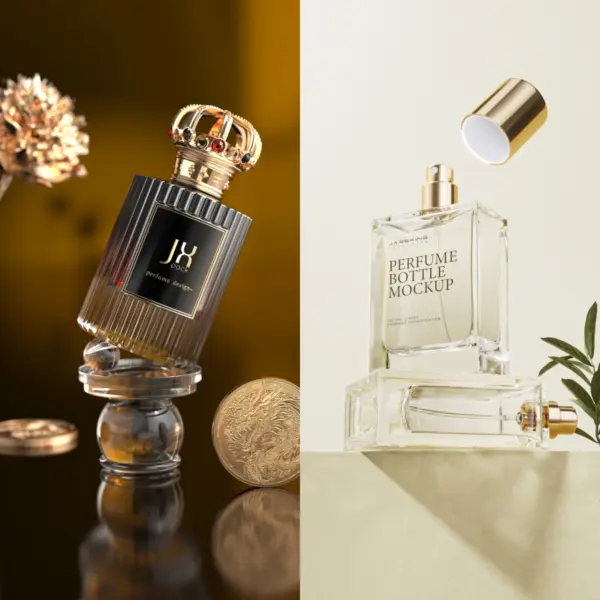
The “New Chinese Style” (Xin Zhong Shi): Modernity Meets Tradition
Within this cultural resurgence, the “New Chinese Style” or “Guochao” (National Tide) has emerged as a dominant aesthetic movement, and fragrance is one of its most elegant expressions. This is not a simple revival of tradition but a sophisticated reinterpretation of classical Chinese aesthetics for a modern audience.
We can deconstruct the aesthetic codes of this movement. In naming, brands use poetic and evocative phrases drawn from classical literature and painting, imbuing the product with a sense of literary depth. In packaging design, there is a clear inspiration from the clean lines and understated beauty of Song Dynasty ceramics, the intricate lattice work of classical garden windows, or the minimalist principles of Chinese landscape painting. Most impressively, in the scent architecture itself, perfumers are attempting to capture abstract cultural concepts—the scent of ink on Xuan paper, the feeling of tranquility in a bamboo grove, the aroma of rare incense burning in a centuries-old temple. This is a highly ambitious form of olfactory art that represents the pinnacle of Asia’s new cultural confidence, transforming fragrance from a consumer product into a vessel of cultural heritage.
Conclusion: Foreseeing the Future in Hong Kong – Asian Fragrance, the World’s New Direction
Cosmopack Asia 2025 is more than just a trade exhibition; it is a crystal ball. Within its halls, amidst the exchange of business cards and the demonstration of new technologies, the future of global fragrance is being written. The key takeaway is clear: the innovations in packaging, ingredients, and formulation are not happening in isolation. They are a direct, dynamic response to the awakening of the world’s most vibrant and sophisticated consumer market. The meticulous attention to sustainable packaging is a mirror of the Asian consumer’s rising environmental consciousness. The surge in bespoke, personalized bottles reflects a generation’s profound need for self-expression. And the glorious renaissance of Eastern botanicals is the fragrant embodiment of a continent’s surging cultural pride.
Ultimately, the most significant shift is Asia’s evolving role. For decades, it was primarily seen as a massive consumer market to be captured. Now, it is undeniably emerging as a vital center of creation, a wellspring of innovation that will set trends for the rest of the world. The West, which for so long dictated the terms of olfactory beauty, will increasingly look East for inspiration, for new ingredients, and for a fresh perspective on what fragrance can be.
In November 2025, the air in Hong Kong will be filled with more than just the scent of perfume. It will carry the unmistakable aroma of confidence, creativity, and change. The future of the Asian fragrance market is not something the world should simply watch; it is something it must lean in and listen to, with bated breath.
Jarsking’s participation at Cosmopack Asia 2025 represents a showcase of its leadership in premium fragrance and beauty packaging innovation. At Hall 7, Booth 7-Q20, Jarsking will present a curated lineup of sustainable glass packaging solutions, custom mold capabilities, advanced decoration techniques, and luxury perfume packaging markets.
Jarsking’s presence is about more than product display; its team provides one-on-one consultations for co-development, rapid prototyping, and sharing of market insights, helping brands navigate trends and speed up time-to-market. Their track record features partnerships with global luxury brands and regional disruptors, reflecting a blend of manufacturing scale, quality, and innovation.
By focusing on the intersection of sustainability, personalization, and digital innovation, Jarsking’s booth at Cosmopack Asia 2025 truly exemplifies the next era of beauty packaging—and establishes itself as an essential resource for any brand seeking to stand out in the competitive Asian fragrance and cosmetic landscape.
